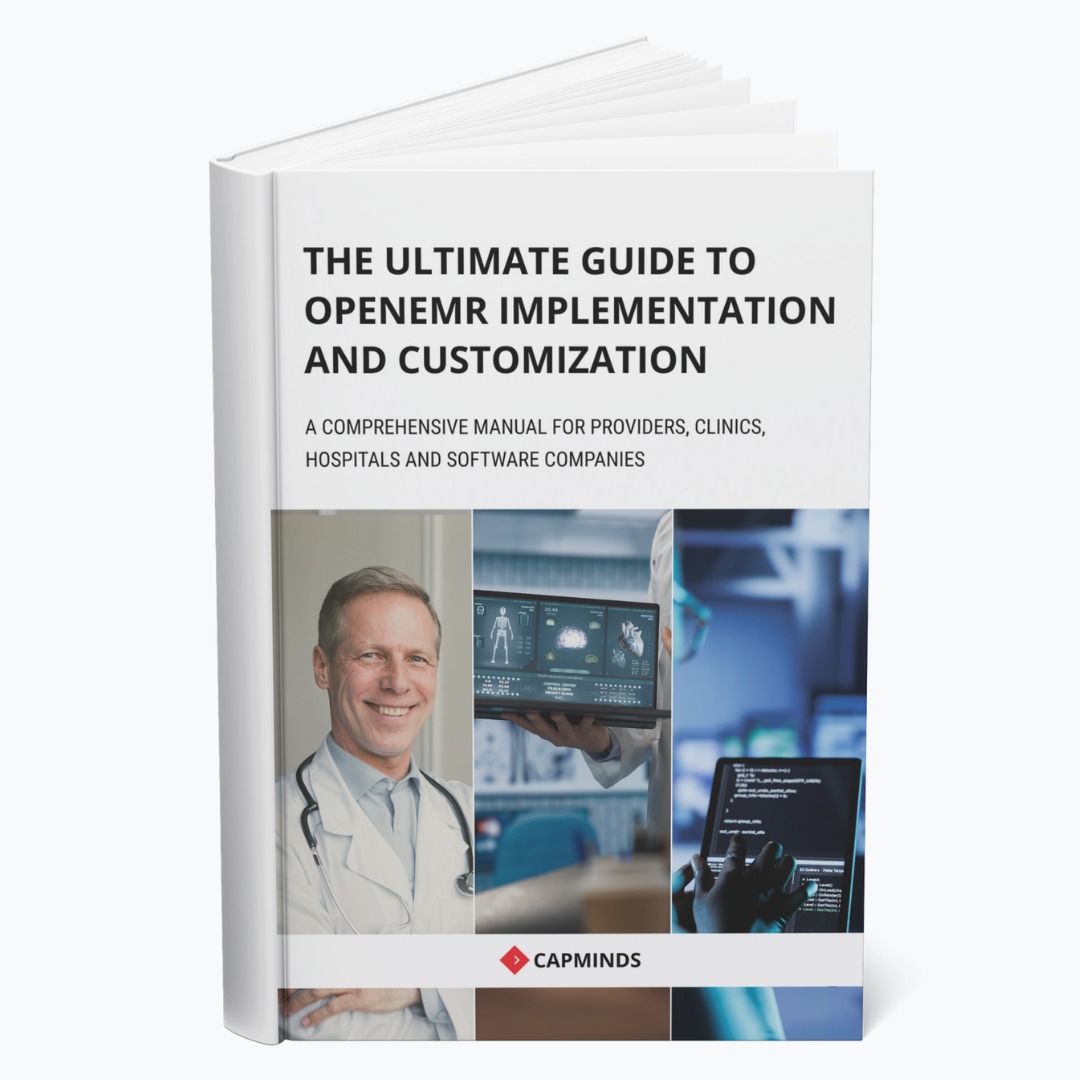UDS and UDS Plus: The Ultimate Guide to Healthcare Compliance and Data Reporting
Imagine you’re a healthcare administrator responsible for ensuring compliance with HRSA guidelines. Your team spends hours compiling, verifying, and submitting Uniform Data System (UDS) reports manually, only to discover errors that could jeopardize your funding. The process is time-consuming, error-prone, and outdated.
For years, healthcare centers have struggled with the burdens of manual data reporting, compliance risks, and inefficient workflows. While essential for tracking healthcare performance, the Uniform Data System (UDS) has posed challenges in terms of accuracy, timeliness, and operational costs.
Now, with the introduction of UDS+, HRSA is shifting towards a real-time, automated, and FHIR-based reporting system that integrates directly with Electronic Health Records (EHRs). This transition aims to solve these long-standing issues, but it presents new challenges in implementation, training, and compliance for many healthcare providers.
This guide will help you understand UDS and UDS+, the transition challenges, and the strategic steps your healthcare center must take to stay compliant while improving operational efficiency.
Understanding UDS: The Traditional Reporting Standard
The Uniform Data System (UDS) is a federal reporting system required for Federally Qualified Health Centers (FQHCs) and other HRSA-funded organizations. Its primary purpose is to collect demographics, patient services, clinical outcomes, and financial performance data, allowing HRSA to assess health center efficiency.
Common Challenges with Traditional UDS Reporting
- Time-Intensive Manual Data Entry
- Healthcare centers rely on staff to manually collect and input data, increasing the chances of human error.
- Annual Reporting Cycle
- Health centers only submit reports once a year, leading to outdated insights and missed opportunities for real-time improvements.
- Limited Integration with EHRs
- Many UDS reports are compiled using disparate systems, making it difficult to ensure accuracy and seamless interoperability with EHRs.
- High Compliance Risk
- A single reporting error can result in funding penalties, failed audits, and operational inefficiencies.
Clearly, the need for an automated, accurate, and seamless reporting solution is more crucial than ever.
Related: HL7 FHIR Bulk Data Access: Setting a New Standard for UDS Reporting
Introducing UDS+: The Future of Healthcare Data Reporting
To address the limitations of traditional UDS, HRSA introduced UDS+, a next-generation, automated reporting system that leverages FHIR (Fast Healthcare Interoperability Resources) standards. UDS+ facilitates real-time, electronic data submission, integrating directly with EHRs.
Key Benefits of UDS+ Compliance
✅ Automated Data Reporting – Eliminates manual errors and reduces administrative burden.
✅ Real-Time Data Submission – Provides up-to-date insights for informed decision-making.
✅ Improved Data Accuracy – Enhances funding eligibility by ensuring compliance and precision.
✅ Seamless EHR Integration – Ensures interoperability with all major healthcare IT systems.
✅ Quarterly & On-Demand Reporting – Allows for continuous monitoring and improvement.
How UDS+ Transforms Healthcare Data Management
| Feature | UDS | UDS+ |
|---|---|---|
| Reporting Method | Manual data entry | Automated, FHIR-based submission |
| Reporting Frequency | Annual | Quarterly & Real-Time |
| Data Accuracy | Prone to human errors | Higher accuracy with real-time validation |
| Integration with EHRs | Limited | Full integration via FHIR APIs |
| Operational Cost | High (due to labor-intensive processes) | Reduced with automation |
The Challenges of Transitioning to UDS+
While UDS+ offers clear advantages, many healthcare organizations face hurdles when making the transition.
1. Technical Challenges
- EHR Upgrades Required: Not all legacy EHRs are FHIR-compatible.
- Data Migration Issues: Ensuring historical UDS data aligns with new UDS+ formats.
2. Staff Training & Adoption
- Healthcare IT teams and administrators need training to manage the new system.
- Providers must learn how real-time reporting affects workflow.
3. Compliance Risks
- Failure to meet the April 30, 2025 UDS+ deadline may result in funding penalties.
- Health centers must ensure data security and HIPAA compliance.
4. Implementation Costs
- Initial investment in IT infrastructure and software integration.
- Potential hiring of EHR specialists to assist in the transition.
However, these challenges can be overcome with the right healthcare IT solutions.
Related: Simplifying UDS Reporting: The Power of FHIR-Based EMR Integration
The Perspective of Doctors & Healthcare Professionals: Why UDS+ Matters
From the perspective of doctors and healthcare professionals, UDS+ isn’t just about compliance—it has significant implications for clinical efficiency, patient outcomes, and workload management.
1. More Accurate Patient Data for Better Care
- UDS+ ensures real-time, standardized data, reducing errors in patient demographics, diagnosis tracking, and treatment history.
- Physicians and care teams can make data-driven clinical decisions without relying on outdated manual reporting.
2. Streamlined Workflows & Reduced Administrative Burden
- With automated data collection, doctors and nurses spend less time on documentation and more time on patient care.
- Eliminates the inefficiencies of manual UDS reporting, making compliance less stressful for medical professionals.
3. Improved Quality Metrics & Performance Tracking
- UDS+ enables healthcare providers to track performance metrics (e.g., chronic disease management, and preventive screenings) in real-time.
- This allows physicians to optimize treatment protocols, improving patient health outcomes and meeting quality benchmarks.
4. Enhanced Interoperability Across Care Teams
- With FHIR-based integration, UDS+ connects EHR systems across different departments, ensuring seamless data exchange.
- Physicians, specialists, and allied healthcare providers can collaborate effectively, reducing redundant tests and improving care coordination.
5. Stronger Justification for Funding & Resource Allocation
- Accurate and comprehensive UDS+ reports help medical directors secure better funding for clinical programs.
- Healthcare facilities can demonstrate real-world impact, leading to improved budget allocations for staffing, equipment, and patient services.
The Role of Certified Community Behavioral Health Clinics (CCBHCs) in UDS+
What is a CCBHC?
Certified Community Behavioral Health Clinics (CCBHCs) are federally designated healthcare providers that focus on delivering comprehensive mental health and substance use disorder (SUD) services to underserved populations. These clinics receive enhanced Medicaid reimbursements to ensure they provide integrated, high-quality care.
How CCBHCs Benefit from UDS+
- More Accurate Mental Health Data Reporting
- With UDS+, CCBHCs can track behavioral health outcomes, treatment adherence, and service utilization in real time.
- Improved Care Coordination
- Seamless integration with EHR systems ensures that CCBHCs can share behavioral health data across primary care providers, leading to better patient-centered care.
- Enhanced Funding Opportunities
- CCBHCs rely on performance-based funding; accurate real-time reporting through UDS+ helps secure Medicaid reimbursements and HRSA grants.
- Reduction in Administrative Burdens
- Traditional UDS reporting for behavioral health services is manual and complex. UDS+ automates these processes, reducing the workload on administrative staff.
- Tracking Social Determinants of Health (SDOH)
- UDS+ allows CCBHCs to report Social Determinants of Health (SDOH), which are critical in addressing mental health disparities and improving patient outcomes.
Challenges for CCBHCs in Transitioning to UDS+
- EHR Integration Issues: Many behavioral health EHR systems are not yet optimized for FHIR-based reporting.
- Workforce Training Needs: Behavioral health providers and administrators must be trained on the new UDS+ data entry and reporting procedures.
- Privacy & Security Concerns: Handling sensitive mental health and SUD data requires enhanced security measures to ensure HIPAA compliance.
How CapMinds IT Solutions Ensure UDS+ Compliance
To streamline the transition, CapMinds provide specialized services:
1. EHR Integration & FHIR API Implementation
- Ensures seamless data exchange between systems.
- Reduces data inconsistencies and improves interoperability.
2. Automated UDS+ Reporting & Real-Time Dashboards
- Removes manual data entry, cutting down errors.
- Gives instant access to patient outcomes and clinical trends.
3. Compliance Audits & HRSA Submission Support
- Helps organizations avoid funding penalties.
- Provides expert guidance on data formatting and security.
4. Training & IT Support for Healthcare Professionals
- Educates staff on reporting best practices.
- Offers 24/7 tech support to troubleshoot issues.
Frequently Asked Questions (FAQs)
1. What is the UDS+ deadline for compliance?
The HRSA deadline for UDS+ compliance is April 30, 2025.
2. Can all healthcare providers use UDS+?
No, UDS+ is mandatory for HRSA-funded health centers, including FQHCs and Look-Alike Health Centers.
3. Does my health center need a new EHR system to comply with UDS+?
Not necessarily. However, your EHR must support FHIR-based APIs to enable seamless UDS+ reporting.
4. How does UDS+ improve patient care?
UDS+ ensures more accurate patient data, allowing for better treatment planning, preventive care, and clinical decision-making.
5. How can my health center transition to UDS+ smoothly?
Partnering with a healthcare IT solutions provider can help with EHR integration, staff training, and automated reporting to ensure full compliance.
Take Action Now: Future-Proof Your Healthcare Organization
Transitioning to UDS+ doesn’t have to be overwhelming. With the right tools and expertise, your healthcare center can achieve:
✔ Regulatory Compliance – Avoid penalties and funding risks.
✔ Operational Efficiency – Reduce administrative burden and cut costs.
✔ Enhanced Patient Care – Make data-driven clinical decisions.
Contact us for a free consultation on seamless UDS+ compliance and future-proof your healthcare data management today




